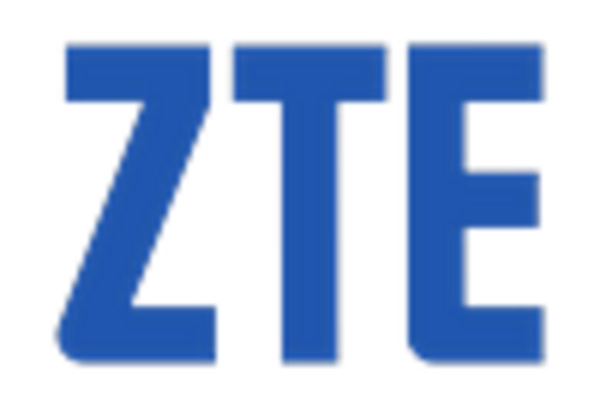Adoption of 5G Technology
The rollout of 5G technology in Italy is significantly impacting the optical network-hardware market. As telecommunications providers upgrade their infrastructure to support 5G networks, there is a corresponding increase in the demand for optical hardware that can handle higher data rates and lower latency. By 2025, it is projected that 5G subscriptions will reach 40% of the total mobile connections in Italy. This transition necessitates the deployment of fiber-optic solutions to connect base stations and enhance overall network performance. The optical network-hardware market is thus poised for growth as companies invest in the necessary technology to facilitate this transition and meet consumer expectations for faster mobile connectivity.
Expansion of Data Centers
The expansion of data centers in Italy is a pivotal driver for the optical network-hardware market. With the increasing reliance on cloud computing and data storage solutions, the demand for high-capacity optical networks is on the rise. As of 2025, Italy has seen a 30% increase in the number of data centers, which necessitates the deployment of advanced optical hardware to ensure efficient data transmission and management. This trend is likely to continue as businesses migrate to digital platforms, requiring scalable and high-performance network solutions. The optical network-hardware market is thus positioned to benefit from this expansion, as data centers seek to enhance their infrastructure to support growing data traffic.
Focus on Smart City Initiatives
Italy's focus on smart city initiatives is emerging as a crucial driver for the optical network-hardware market. As urban areas increasingly adopt smart technologies to improve infrastructure and services, the demand for reliable and high-speed optical networks is growing. By 2025, several Italian cities are expected to implement smart solutions, including traffic management systems and public safety networks, which require robust optical connectivity. This trend indicates a shift towards integrated urban management systems that rely on advanced optical hardware to facilitate real-time data transmission. The optical network-hardware market stands to benefit from these initiatives as municipalities invest in the necessary infrastructure to support their smart city goals.
Increasing Internet Penetration
The optical network-hardware market in Italy is experiencing growth due to the increasing internet penetration across the country. As of 2025, approximately 85% of households have access to the internet, which is a significant rise from previous years. This surge in connectivity drives the demand for advanced optical network solutions, as consumers and businesses alike seek faster and more reliable internet services. The proliferation of smart devices and IoT applications further fuels this trend, necessitating robust optical infrastructure. Consequently, telecommunications companies are investing heavily in optical network hardware to meet the escalating demand for bandwidth and speed, thereby enhancing their service offerings in the competitive market.
Rising Demand for Video Streaming Services
The optical network-hardware market is also driven by the rising demand for video streaming services in Italy. As of 2025, over 60% of internet traffic is attributed to video content, reflecting a shift in consumer behavior towards on-demand entertainment. This trend compels internet service providers to enhance their optical network infrastructure to accommodate the increased bandwidth requirements. The need for high-quality video streaming necessitates the deployment of advanced optical hardware capable of delivering seamless and uninterrupted service. Consequently, the optical network-hardware market is likely to see substantial growth as providers invest in technology to support this burgeoning demand for high-definition and ultra-high-definition content.

















Leave a Comment